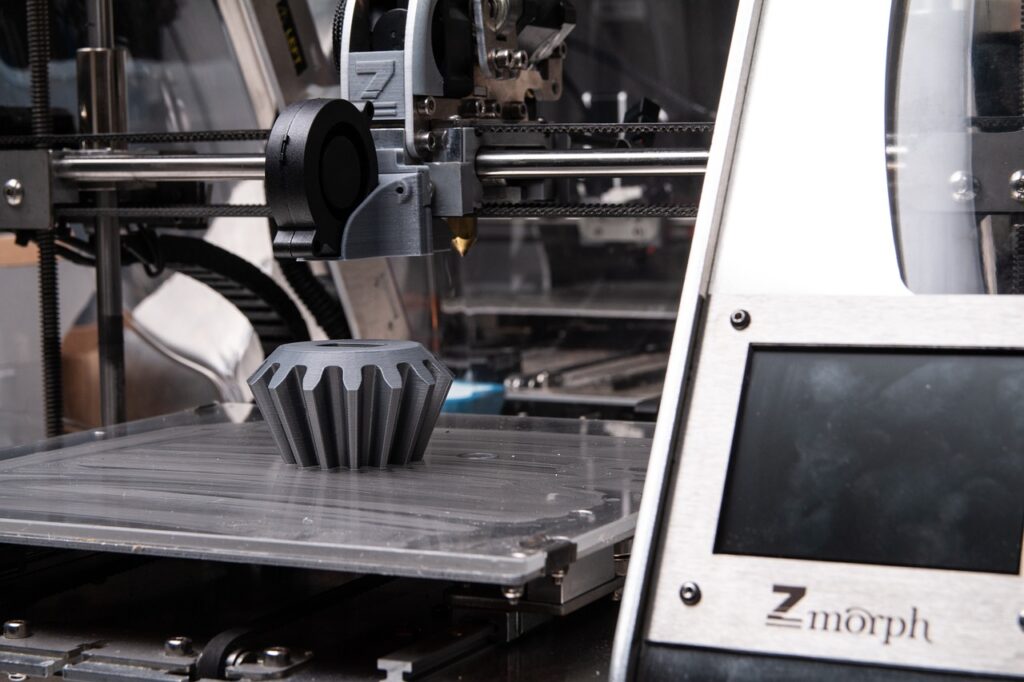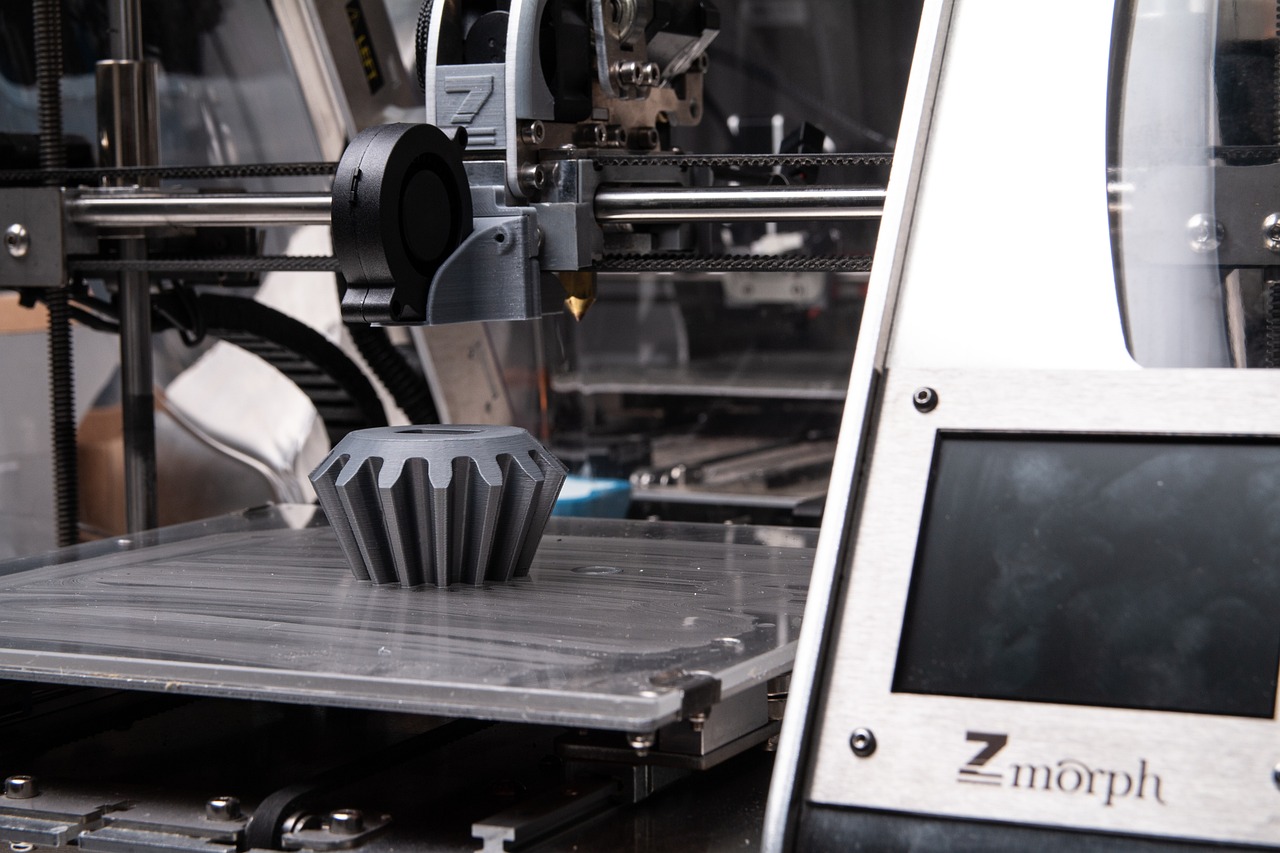Introduction
3D printing is a revolutionary technology that has changed the face of modern manufacturing. It allows individuals and businesses to produce complex objects quickly, easily and affordably, without the need for specialized tools or equipment. In this blog post, we’ll explore what 3D printing is, how it works, and its applications in various industries.

What is 3D printing?
3D printing, also known as additive manufacturing, is a process of creating three-dimensional objects from digital files by layering materials one on top of another. The process involves slicing a digital model into thin layers and then printing each layer, one on top of the other, until the object is complete.
How does 3D printing work?
The process of 3D printing involves several steps, including:
1. Designing the digital model: The first step in 3D printing is designing a digital model of the object you want to create. This can be done using a variety of software programs, including CAD (computer-aided design) software.
2. Slicing the model: Once the digital model is complete, it must be sliced into thin layers using slicing software. This software takes the 3D model and breaks it down into thousands of individual layers that can be printed one at a time.
3. Preparing the printer: The next step is to prepare the 3D printer for printing. This involves loading the printer with the appropriate material and calibrating the print bed.
4. Printing the object: Once the printer is ready, it will begin printing the object one layer at a time. The printer will follow the instructions provided by the slicing software, laying down material layer by layer until the object is complete.
Applications of 3D printing
3D printing has a wide range of applications in various industries, including:
1. Manufacturing: 3D printing is revolutionizing the manufacturing industry by making it easier and more affordable to produce complex objects. It allows manufacturers to produce parts and products quickly and efficiently, without the need for specialized tools or equipment.
2. Medicine: 3D printing is being used to produce customized medical implants and prosthetics that fit perfectly with the patient’s body. It is also being used to create models of organs and tissues for surgical planning and training.
3. Architecture: Architects are using 3D printing to create models of buildings and other structures before they are built. This allows them to test different designs and make changes before construction begins.
4. Education: 3D printing is being used in education to teach students about design and engineering. Students can create their own designs and then print them on a 3D printer, bringing their ideas to life.
Benefits of 3D printing
There are several benefits of 3D printing, including:
1. Cost-effective: 3D printing eliminates the need for expensive tooling and equipment, making it more cost-effective than traditional manufacturing methods.
2. Faster production: 3D printing allows for faster production times than traditional manufacturing methods, as objects can be printed in a matter of hours rather than days or weeks.
3. Customization: 3D printing allows for the customization of products, as each object can be designed to meet specific needs and requirements.
4. Reduced waste: 3D printing produces less waste than traditional manufacturing methods, as it only uses the amount of material required to produce the object.
Challenges of 3D printing
Despite its many benefits, 3D printing also poses several challenges, including:
1. Quality control: Ensuring the quality and consistency of 3D printed objects can be a challenge, as there are many variables that can affect the final product, such as the temperature of the printer and the quality of the materials used.
2. Intellectual property: 3D printing raises concerns about intellectual property rights, as it is easy to replicate objects without permission. This can lead to issues with copyright infringement and counterfeiting.
3. Material limitations: 3D printing currently has limitations in terms of the materials that can be used. While there are many materials available for 3D printing, they are not always suitable for every application.
4. Size limitations: 3D printing also has limitations in terms of the size of objects that can be printed. Most 3D printers have a limited build volume, which can restrict the size of the objects that can be printed.
Future of 3D printing
Despite its challenges, 3D printing is rapidly evolving and has a promising future. Some of the advancements that are expected in the future include:
1. Faster printing speeds: As technology improves, 3D printing is expected to become faster and more efficient, allowing for even faster production times.
2. Improved materials: The materials used in 3D printing are also expected to improve, with new materials being developed that are stronger, more durable, and more flexible.
3. Larger build volumes: 3D printers with larger build volumes are expected to become available in the future, allowing for the printing of larger objects.
4. New applications: 3D printing is expected to find new applications in various industries, such as aerospace, automotive, and fashion.
Conclusion
3D printing is a game-changing technology that is revolutionizing the manufacturing industry. It offers numerous benefits, including cost-effectiveness, faster production times, customization, and reduced waste. While there are challenges associated with 3D printing, the technology is rapidly evolving, and its future looks promising. As 3D printing continues to advance, it has the potential to transform the way we design, create, and produce objects.
FAQs
On the basis of queries here are Frequently Asked Questions –
1. Is 3d Printing expensive?
Ans. Initially it is expensive but the growing technology will make it affordable.
2. How much does 3d printing cost
Ans. It is hard to estimate the exact cost as it varies from object to regions. Several factors such as material, model complexity, and labor affect the price of 3D printing.
3. What are the benefits of 3D printing?
Ans. 3d printing has several benefits including fast production, cost effective, customization and reduce wastes.
4. What are the different types of 3D printing technologies?
Ans. There are several 3D printing technologies available, including Fused Deposition Modeling (FDM), Stereolithography (SLA), Selective Laser Sintering (SLS), Digital Light Processing (DLP), and Binder Jetting. Each technology has its own unique process and materials.
5. How long does it take to 3D print an object?
Ans. The time it takes to 3D print an object depends on various factors, such as the size and complexity of the object, the chosen printing technology, and the desired level of detail. Smaller and simpler objects can be printed in a matter of minutes, while larger and more intricate designs may take several hours or even days.
6. Can I modify or customize 3D-printed objects?
Ans. Yes, one of the advantages of 3D printing is the ability to easily modify or customize objects. With a digital 3D model, you can make design changes and print updated versions of the object without the need for new molds or tooling.
7. Is 3D printing expensive?
Ans. The cost of 3D printing can vary depending on factors such as the printer technology, materials used, and the size and complexity of the object. Consumer-level 3D printers are relatively affordable, while industrial-grade printers and high-quality materials can be more expensive. However, 3D printing can often be more cost-effective for low-volume or customized production compared to traditional manufacturing methods.
8. Can I 3D print functional objects?
Ans. Yes, 3D printing can be used to create functional objects with specific mechanical or functional properties. For example, engineers and designers use 3D printing to produce prototypes, tooling, and even end-use parts for various industries.
9. Are there any safety considerations with 3D printing?
Ans. While 3D printing is generally safe, it’s important to follow safety guidelines. Some materials used in 3D printing may emit fumes or odors, so adequate ventilation is recommended. Additionally, certain materials and processes may involve high temperatures or require post-processing steps that should be performed with caution.
10. Can I sell 3D-printed objects?
Ans. Selling 3D-printed objects is possible, but it’s important to be aware of intellectual property rights and licensing agreements. Some designs may be protected by patents or copyrights, so it’s crucial to ensure you have the legal rights to sell the objects you produce.
11. What is the future of 3D printing?
Ans. The future of 3D printing holds great potential. It is expected to continue advancing with improved technologies, expanded material options, and increased accessibility. As 3D printing becomes more widespread, it has the potential to revolutionize industries, enable personalized manufacturing, and drive innovation in various fields.
Source
Related searches
